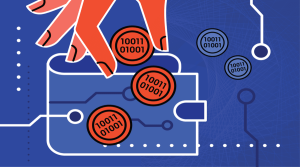
In recent years, there has been a growing concern about the environmental impact of traditional financial systems and the need for sustainable alternatives. Circular economy tokens have emerged as a solution combining blockchain technology’s power with sustainability principles. This article explores the concept of circular economy tokens and their role in promoting sustainable consumption. By harnessing the potential of green cryptocurrency, we can pave the way for a more sustainable and environmentally conscious economy.
The Concept of Circular Economy Tokens
Understanding the Circular Economy
The circular economy is a regenerative economic model that aims to minimize waste and maximize the efficient use of resources. It promotes the idea of keeping products, components, and materials in circulation for as long as possible through strategies like recycling, reusing, and remanufacturing. By transitioning from a linear “take-make-dispose” model to a circular one, we can reduce our environmental footprint and create a more sustainable future.
The Rise of Cryptocurrencies
Cryptocurrencies, such as Bitcoin and Ethereum, have gained significant attention in recent years due to their decentralized nature and potential for financial innovation. These digital currencies operate on blockchain technology, which offers transparency, security, and immutability. Cryptocurrencies have disrupted traditional financial systems and opened up new possibilities for peer-to-peer transactions.
Bringing Sustainability to the Blockchain
Circular economy tokens merge the principles of the circular economy with the power of blockchain technology. These tokens represent assets or values tied to sustainable products, services, or initiatives. By leveraging blockchain’s transparency and traceability, circular economy tokens enable consumers and businesses to track the environmental impact of their transactions, fostering accountability and promoting sustainable consumption.
How Circular Economy Tokens Work
Tokenizing Sustainable Products and Services
Circular economy tokens can be used to tokenize sustainable products and services, making them easily tradable and identifiable on the blockchain. These tokens serve as digital representations of real-world assets, enabling individuals to purchase, sell, or exchange sustainable goods and services with ease. Through tokenization, the lifecycle of a product can be tracked, ensuring transparency and providing consumers with reliable information about the sustainability credentials of a particular item.
Facilitating Circular Supply Chains
Circular economy tokens also play a vital role in facilitating circular supply chains. By tokenizing each step of the supply chain process, from sourcing raw materials to manufacturing, distribution, and recycling, stakeholders can ensure that resources are used efficiently and waste is minimized. This transparency enables businesses to identify bottlenecks in the supply chain, optimize processes, and reduce their environmental impact.
Incentivizing Eco-Friendly Behavior
Circular economy tokens can incentivize eco-friendly behavior by rewarding individuals or businesses for sustainable actions. For instance, token rewards can be given to consumers who recycle their products, choose environmentally friendly transportation options, or support sustainable businesses. This gamification of sustainability encourages positive environmental actions and creates a virtuous cycle of behavior change.

Benefits of Circular Economy Tokens
- Fostering Sustainable Consumption
Circular economy tokens encourage sustainable consumption patterns by providing consumers with greater visibility into the environmental impact of their choices. By enabling individuals to make informed decisions, these tokens empower consumers to support businesses that prioritize sustainability. As a result, the demand for eco-friendly products and services increases, driving the transition to a more circular and sustainable economy.
- Encouraging Resource Efficiency
The tokenization of circular economy practices promotes resource efficiency by optimizing the use of materials and reducing waste generation. By incentivizing businesses to adopt circular practices, such as recycling, remanufacturing, and sharing economies, circular economy tokens contribute to a more resource-efficient and less polluting economy. This not only benefits the environment but also helps businesses reduce costs and improve their bottom line.
- Strengthening Community Engagement
Circular economy tokens can foster community engagement by creating networks of individuals, businesses, and organizations that share a commitment to sustainability. These tokens facilitate peer-to-peer transactions and encourage collaboration between different stakeholders, promoting the exchange of ideas, resources, and knowledge. By strengthening community ties, circular economy tokens create a supportive ecosystem for sustainable initiatives to thrive.
Challenges and Limitations
- Regulatory and Legal Considerations
The implementation of circular economy tokens faces regulatory and legal challenges. As this field is relatively new, existing regulations may not adequately address the unique characteristics and requirements of these tokens. Clear guidelines and frameworks are necessary to ensure compliance and protect consumers and businesses participating in circular economy token initiatives.
- Technical and Infrastructure Requirements
Effective implementation of circular economy tokens requires robust technical infrastructure and interoperability between different blockchain platforms. Scalability, security, and user-friendliness are essential considerations when designing token systems. Overcoming technical challenges and ensuring seamless integration with existing systems will be crucial for the widespread adoption of circular economy tokens.
- Overcoming Skepticism and Adoption Barriers
Like any emerging technology, circular economy tokens face skepticism and resistance from various stakeholders. Educating the public, businesses, and policymakers about the benefits and potential of these tokens is crucial for widespread adoption. Addressing concerns related to security, volatility, and environmental impact will be key to building trust and overcoming barriers to entry.
Case Studies: Circular Economy Token Initiatives
Project A: Revolutionizing Waste Management
Project A is an innovative circular economy token initiative that aims to revolutionize waste management. By incentivizing individuals to properly sort and recycle their waste, the project rewards participants with tokens that can be exchanged for sustainable products or services. This initiative not only reduces waste but also creates economic opportunities for local communities and encourages a circular mindset.
Project B: Rewarding Sustainable Practices in Fashion
Project B focuses on the fashion industry, which is notorious for its environmental impact. By tokenizing sustainable fashion practices, such as clothing rental, upcycling, and responsible sourcing, this initiative encourages consumers to make conscious fashion choices. The tokens earned through sustainable fashion actions can be used for discounts, exclusive collections, or supporting ethical fashion brands.
Project C: Building Sustainable Supply Chains
Project C tackles the challenge of building sustainable supply chains by tokenizing each stage of the process. From responsible sourcing of raw materials to tracking the carbon footprint of transportation, this initiative ensures transparency and accountability throughout the supply chain. By rewarding suppliers, manufacturers, and retailers for sustainable practices, the project drives the adoption of circular principles and reduces environmental impact.
The Future of Circular Economy Tokens
Scaling Up and Mainstream Adoption
The future of circular economy tokens lies in scaling up and achieving mainstream adoption. As more businesses and consumers recognize the benefits of sustainable consumption, the demand for circular economy tokens is likely to grow. Collaborative efforts between industry leaders, policymakers, and technology experts will be essential in developing standardized frameworks and creating an ecosystem that supports the widespread use of these tokens.
Collaboration and Interoperability
To maximize the impact of circular economy tokens, collaboration and interoperability between different token initiatives and blockchain platforms are crucial. Establishing common standards and protocols will enable seamless integration and exchange of tokens, fostering a connected circular economy network. By working together, stakeholders can create synergies and unlock the full potential of circular economy tokens.
Impact on Global Sustainability Goals
Circular economy tokens have the potential to make a significant contribution to global sustainability goals, such as reducing waste, conserving resources, and mitigating climate change. By promoting sustainable consumption, incentivizing eco-friendly behavior, and fostering community engagement, these tokens can accelerate the transition to a more sustainable and resilient economy. However, continuous monitoring, evaluation, and adaptation will be necessary to ensure that circular economy tokens align with long-term sustainability objectives.
Conclusion
Circular economy tokens offer an innovative solution to promote sustainable consumption and build a more environmentally conscious economy. By harnessing the power of blockchain technology, these tokens enable transparent and accountable transactions, incentivize eco-friendly behavior, and facilitate the transition to a circular economic model. However, challenges such as regulatory considerations, technical requirements, and skepticism must be addressed to realize the full potential of circular economy tokens. As we strive for a greener future, circular economy tokens have the potential to play a pivotal role in promoting sustainability and driving positive change.
FAQs
FAQ 1: Can circular economy tokens be exchanged for traditional currencies?
No, circular economy tokens are designed to operate within specific token ecosystems and are not directly exchangeable for traditional currencies. However, some tokens may have built-in features that allow them to be traded on cryptocurrency exchanges.
FAQ 2: Are circular economy tokens secure and private?
Circular economy tokens leverage blockchain technology, which provides security and transparency. The transactions recorded on the blockchain are immutable and can be verified by participants. However, the level of privacy can vary depending on the specific token and its associated platform.
FAQ 3: How can individuals participate in circular economy token initiatives?
Individuals can participate in circular economy token initiatives by engaging in sustainable actions or purchasing sustainable products and services that are tokenized. They can earn tokens through recycling, supporting eco-friendly businesses, or adopting circular practices in their daily lives.
FAQ 4: What role do governments play in supporting circular economy tokens?
Governments can support circular economy token initiatives by creating favorable regulatory frameworks, providing funding and incentives for sustainable projects, and promoting awareness and education about the benefits of circular economies. Collaboration between the public and private sectors is essential for the successful implementation and scalability of these initiatives.
FAQ 5: How can circular economy tokens contribute to a more sustainable future?
Circular economy tokens encourage sustainable consumption, resource efficiency, and community engagement. By incentivizing eco-friendly behavior and supporting circular practices, these tokens can reduce waste, conserve resources, and mitigate the environmental impact of economic activities. They have the potential to drive positive change and contribute to the achievement of global sustainability goals.
I’m a highly experienced and well-respected author in the field of cryptocurrency. I have been writing about Bitcoin, Ethereum, and other digital assets for over 5 years. In addition to my career as an author, I’m also a highly sought-after keynote speaker and consultant on all things crypto and I’m passionate about helping people understand this complex and often misunderstood industry.
